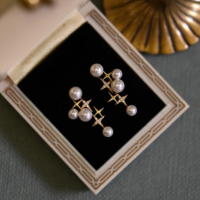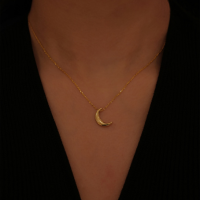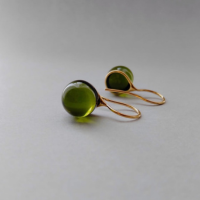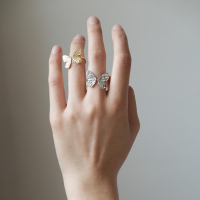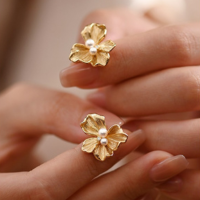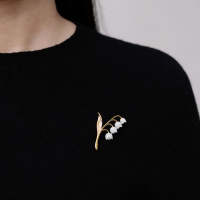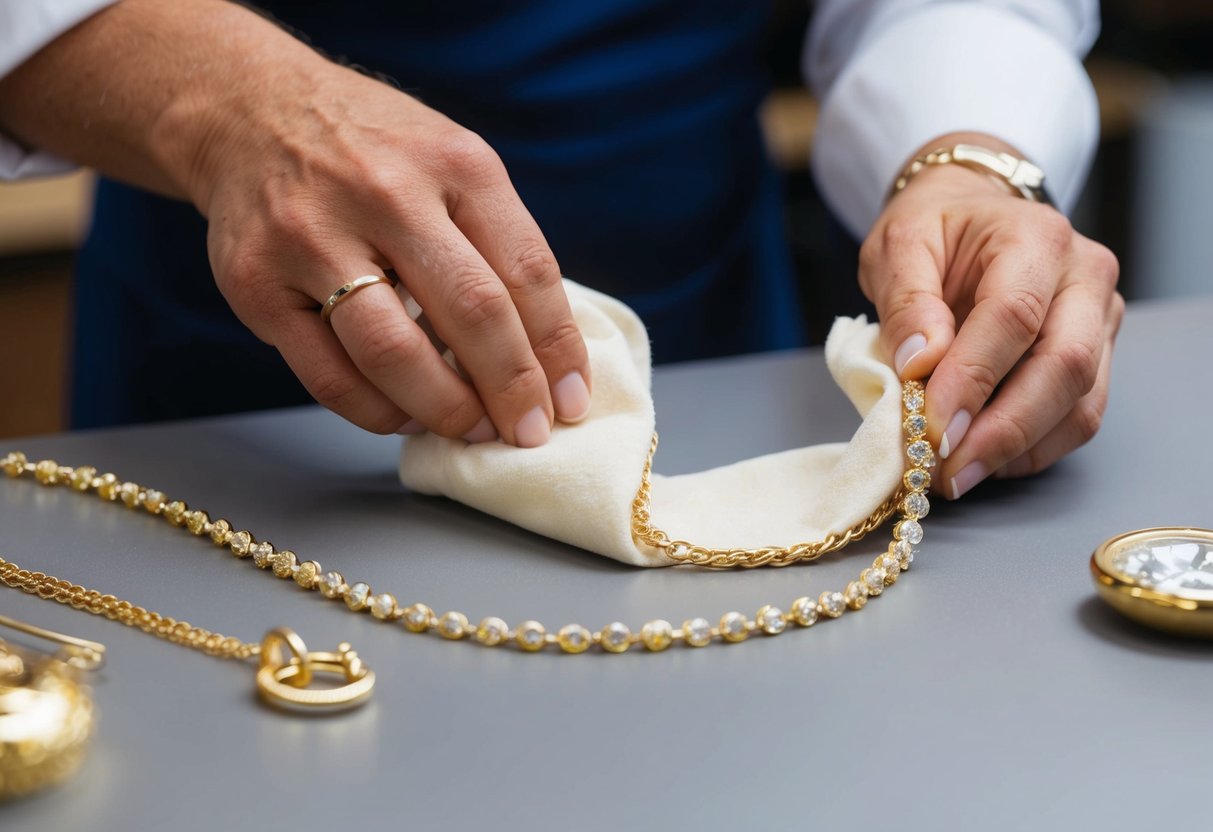
Does Brass Jewelry Turn Green
Check out our personalized jewelry collections! (kids drawing jewelry, coin jewelry, wire jewelry, fingerprint jewelry, handwriting jewelry, and more)
Brass jewelry is a popular choice, admired for its warm, golden hue and affordability. Many of us love adding these pieces to our collection for their unique look. But there's a common concern when it comes to wearing brass jewelry— does it turn green? Yes, it can turn green when it reacts with moisture and sweat, causing a green patina to form on your skin.
We should consider what causes this color change and how we can prevent it. Brass is an alloy of copper and zinc, and it's the copper content that interacts with your skin's oils or sweat. While this green tint can be a sign of the metal's quality, you can take simple steps to protect your jewelry and keep it looking fresh.
Learning how to care for our brass jewelry can help maintain its shine. By keeping pieces dry and storing them properly, we can reduce the chance of tarnishing. Regular cleaning can also help prevent those green stains on our skin. Let's explore how we can keep our favorite brass pieces as bright as the day we got them.
Key Takeaways
- Brass can turn green from moisture and sweat.
- Proper care can prevent tarnishing.
- Store and clean regularly to maintain shine.
The Nature of Brass Jewelry
Brass jewelry has a distinctive look and feel. We value it for its affordability and versatility. It's a popular choice among jewelry enthusiasts, offering a warm, golden hue without the high price tag of gold.
Composition of Brass
Brass is an alloy primarily made from copper and zinc. Copper gives brass its yellow tone, while zinc adds strength and durability. The ratio of these metals can vary, influencing the color and resistance to tarnish.
Sometimes, small amounts of other metals like lead or nickel are included to enhance workability. Understanding this blend helps us appreciate the metal's beauty and potential reactions over time. Knowing the composition is important for those who might have metal allergies or sensitivities.
Characteristics of Brass Wear
Brass jewelry stands out for its warm glow and timeless appeal. It often mimics the look of gold at a fraction of the cost. With regular wear, brass naturally patinas, developing a greenish tint as it interacts with oils and sweat.
This color change is a result of oxidation, which some appreciate for its antique look. Many enjoy the unique charm and character it brings. To keep brass shiny, gentle cleaning with soap and water maintains its luster, and storing it properly minimizes oxidation effects.
Factors Influencing Tarnish
Tarnish on brass jewelry can be influenced by several factors, including the acidity of our skin, environmental conditions, and chemical exposure. Each of these can affect how quickly brass loses its luster.
Skin pH Levels
Our skin's pH level plays a big role in how brass jewelry tarnishes. Skin pH can range from 4.5 to 6.2. If our skin leans more acidic, it often leads to faster tarnishing.
Acidic skin causes brass to react, forming a greenish layer. Keeping our skin moisturized and using protective coatings on jewelry can help. By doing so, we create a barrier that lessens tarnish effects.
A quick tip: Store brass jewelry in a dry place to minimize reactions. This small step reduces the speed of tarnish development, maintaining our pieces for longer.
Environmental Elements
Environmental conditions also affect tarnish. Humidity, air pollution, and sweat can all speed up tarnishing. When exposed to these elements, brass reacts, making the jewelry lose its shine.
Humidity in the air provides moisture that promotes tarnish. We can use silica gel packs or airtight containers to protect our jewelry. Reducing exposure to such elements helps keep our jewelry looking fresh.
Moreover, air quality matters. Pollutants like sulfur compounds can cause tarnish, so avoiding industrial areas or storing jewelry away from these environments can be beneficial.
Exposure to Chemicals
Chemicals are another major factor. Everyday products like lotions, perfumes, and even hand soap can lead to tarnish. When these substances come into contact with brass, they trigger reactions that dull its appearance.
For those of us who love our jewelry, it's smart to apply lotions and sprays before putting on any pieces. This way, we minimize contact and potential reactions.
Additionally, we should be cautious of household cleaning agents. Wearing gloves while cleaning or taking off jewelry can help protect it from harsh chemical exposure.
Preventing Brass Jewelry From Turning Green
Brass jewelry can tarnish, leaving a green mark on the skin. We can avoid this by storing it properly, cleaning it regularly, and using protective coatings.
Proper Storage
Storing brass jewelry the right way helps keep it looking great. We should store it in a dry place, away from humidity. A soft pouch or cloth bag works well to protect it. These materials prevent scratches and keep moisture out.
A box lined with fabric can also be useful. It's important to keep each piece separate so they don't scratch each other. Remember to avoid storing jewelry in the bathroom. The moisture from showers and sinks can speed up tarnishing.
Regular Cleaning
Cleaning brass jewelry on a regular basis helps keep it shiny and bright. We can use simple, gentle methods to do this. For example, a mixture of lemon juice and baking soda can be very effective. Just mix them into a paste, and gently rub it on the jewelry with a soft cloth.
Another method is to use a mild soap with warm water. Rinse carefully, then dry it completely before storing it. Regular cleaning not only maintains the appearance but also prevents the buildup of tarnish.
Protective Coatings
Applying a protective coating can slow down tarnishing. There are special lacquers and sprays made just for this purpose, which we can find at jewelry or craft stores. These coatings create a barrier between the skin and the metal.
Clear nail polish can also work in a pinch. Paint a thin layer on the parts that touch the skin, like inside rings or the back of necklaces. Just remember to reapply as the coating wears off over time. Using coatings helps keep our jewelry looking beautiful longer.
Caring for Brass Jewelry
To keep brass jewelry shiny and beautiful, regular cleaning and maintenance are essential. Moisture and oils can cause tarnishing, so it's important to clean regularly and store them properly.
Polishing Tips
Polishing brass jewelry is a simple way to restore its shine. Use a gentle cloth, like microfiber, to avoid scratches. Gently rub the surface to remove any tarnish or marks. It's best to avoid using paper towels or rough fabrics, as they might damage the jewelry.
Commercial polishes are available, but ensure they are safe for brass. Apply a small amount to a cloth and buff the jewelry gently. Rinse and dry thoroughly, removing any residue. Remember to polish in a ventilated area and wash your hands afterward.
Regular polishing helps maintain the luster of brass jewelry and prevents it from losing its appeal over time.
Home Remedies
For a more natural approach, some home remedies can help maintain brass jewelry. Mix lemon juice and baking soda to form a paste. Apply it to the jewelry, gently scrubbing with a soft brush. This helps remove tarnish and bring back the shine.
Vinegar and salt is another effective mixture. Dissolve salt in vinegar, and with a cloth, gently rub the jewelry. Rinse thoroughly to remove all traces.
Both methods are easy and can be done with items from our kitchen. Just make sure to dry the pieces well to avoid moisture damage. Regular care like this keeps brass looking as good as new.
Understanding Wear and Tear
Brass jewelry can change over time, developing a unique look. We will explore how wear and tear affect its appearance and lifespan.
Patina Development
Brass jewelry often forms a patina when exposed to air, moisture, or even our skin over time. This patina gives jewelry a unique, rustic charm. It appears as a greenish or brownish layer that can make each piece one-of-a-kind. Some of us appreciate this change, viewing it as adding character and depth to our accessories.
To slow down patina formation, we recommend storing brass jewelry in dry, airtight containers. Cleaning regularly with a soft cloth helps maintain the original sheen. Avoiding harsh chemicals will also protect the surface, preserving the piece's beauty.
Longevity of Brass Jewelry
The lifespan of brass jewelry depends on care and frequency of wear. Regularly worn pieces may show more signs of wear but can still last if well-maintained. We can extend their life by taking proper care.
We suggest keeping jewelry away from water and chemicals like perfumes or lotions. As with patina prevention, proper storage is key. Using soft pouches or lined boxes can also help. Wearing brass jewelry mindfully will enhance its durability, allowing us to enjoy these stylish pieces for years.
Frequently Asked Questions
Brass jewelry is popular for its beauty. When worn often, care is needed to prevent tarnishing and maintain shine.
How can you prevent brass jewelry from tarnishing when worn?
We can stop tarnishing by keeping our brass jewelry dry and storing it in airtight bags. Avoiding sweat and water helps too. Use anti-tarnish strips to protect our pieces when not in use.
What are the best practices for maintaining brass jewelry's shine over time?
To keep our brass jewelry shining, we can clean it regularly with a mixture of lemon juice and baking soda. Buffing with a soft cloth also helps. We should polish gently to avoid scratches.
Can wearing brass jewelry daily lead to skin discoloration?
Yes, wearing brass jewelry daily might cause skin discoloration for some of us. Brass can react with sweat and oils on our skin, leaving a greenish tint, common but harmless.
Is there a way to wear brass jewelry in water without causing damage?
It's best to avoid wearing our brass jewelry in water. If necessary, applying a clear coat of nail polish can offer temporary protection against moisture. It's not foolproof, but it helps.
Are there any risks associated with wearing brass jewelry frequently?
Frequent wear might irritate sensitive skin for some of us. Brass contains copper, which can cause reactions. If allergies are a concern, coating with jewelry sealant or opting for nickel-free pieces is safer.
What measures can be taken to ensure brass jewelry remains free of tarnish?
Using a proper storage setup is important. We can store each piece in a separate, soft pouch. Limiting exposure to air, moisture, and chemicals will help us maintain brass's natural glow.

